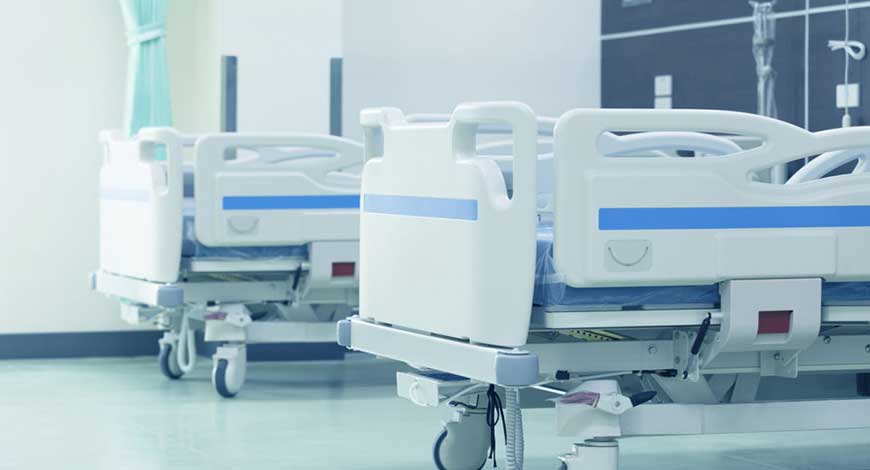India stands at the threshold of a healthcare revolution, with its MedTech industry poised to drive Viksit Bharat’s breakthrough in healthcare innovation. As the nation accelerates its self-reliance drive, it aspires to become the world’s leading hub for innovation, manufacturing, and accessibility in healthcare. This vision embodies the spirit of ‘Make in India, Made for the World,’ where globally competitive, high-quality prosthetic products not only transform lives but also position India as a global leader in assistive healthcare solutions.
This movement is about restoring dignity, ensuring universal healthcare access, and aligning innovations with India’s vision of becoming a Vishwaguru—a leader in cutting-edge, inclusive healthcare solutions.
In a world where quality prosthetic solutions remain inaccessible to millions, India has already made significant strides in manufacturing indigenous, world-class prosthetics. These advancements are reducing dependency on imports and making advanced mobility solutions more affordable and accessible. Beyond healthcare, this contributes to India’s economic growth, employment generation, and technological advancement, positioning the country as a global hub for assistive healthcare innovation.
By empowering lives, creating high-skill jobs, reducing import dependency, and establishing itself as a global supplier, India is setting a benchmark in the healthcare industry.
India’s development journey is defined by its commitment to inclusive progress. With ‘Vasudhaiva Kutumbakam’—the world is one family—at its core, the country is extending its reach beyond its borders, delivering ‘Made in India, Made for the World’ prosthetic solutions to the global stage. This is Atmanirbhar Bharat in action, paving the way for a ‘Viksit Bharat’ future.
The 2025 Union Budget has taken a transformative step by significantly increasing healthcare funding, allocating Rs 99,858.56 crore to the Health Ministry. This budgetary boost will enhance healthcare access, particularly in rural areas, ensuring that quality medical facilities are no longer a privilege but a fundamental right.
The budget further strengthens India’s healthcare sector by creating new opportunities for medical students, equipping them with the necessary skills to become world-class healthcare practitioners. Additionally, the promotion of medical tourism will allow India to showcase its healthcare capabilities on a global stage, attracting international collaboration and investment. The focus on food and nutrition, coupled with rising support for mental well-being initiatives, ensures a holistic approach to healthcare, balancing disease treatment with overall wellness.
Moreover, the 2025 budget prioritises domestic manufacturing through customs duty reforms, clean tech incentives, and enhanced MSME support, driving growth and self-reliance. Strategic initiatives such as the National Manufacturing Mission and enhanced financial support for MSMEs and startups will reduce import dependency and promote sustainable technologies.
However, while the budget provides a solid foundation for growth and innovation, there are notable gaps in areas such as export incentives, targeted skill development for advanced manufacturing, and comprehensive infrastructure upgrades. Addressing these concerns will ensure a more robust framework for India’s manufacturing sector, reinforcing its competitive edge on the global stage.
The government’s commitment to strengthening domestic manufacturing is evident in the continuation of the Production Linked Incentive (PLI) scheme for pharmaceuticals, which has received an allocation of Rs 2,445 crore. This initiative underscores India’s push for self-reliance in API (Active Pharmaceutical Ingredient) and MedTech production. Additionally, several measures have been introduced to encourage domestic manufacturing of medical devices, reducing import dependence and attracting large investments.
The Production Linked Incentive Scheme for Promoting Domestic Manufacturing of Medical Devices (PLI MD) was approved in 2020 with a financial outlay of Rs 3,420 crore. This scheme provides financial incentives at the rate of 5 per cent on incremental sales of medical devices manufactured in India. By September 2024, cumulative sales under this scheme had reached Rs 8,039.63 crore, including exports worth Rs 3,844.01 crore.
Furthermore, the Promotion of Medical Device Parks scheme, approved in 2020 with an outlay of Rs 400 crore, aims to provide world-class infrastructure to medical device units. The initiative has received proposals from 16 states, with Uttar Pradesh, Tamil Nadu, Madhya Pradesh, and Himachal Pradesh receiving final approval for infrastructure development.
To further support the medical device industry, the government launched the Scheme for Strengthening Medical Device Industry in 2024 with a financial outlay of Rs 500 crore. This scheme includes five sub-schemes focusing on common facilities for medical device clusters, marginal investments to reduce import dependence, capacity building, clinical studies support, and industry promotion. These targeted measures will enhance India’s capabilities in the MedTech sector, making it globally competitive.
Additionally, the Department of Pharmaceuticals has initiated the Scheme for Promotion of Research and Innovation in the pharma MedTech sector, establishing Centres of Excellence at seven National Institutes of Pharmaceutical Education and Research. These centres focus on fostering industry collaboration, research innovation, and capacity building, ensuring that India remains at the forefront of medical technology advancements.
India’s MedTech industry is more than just a growth sector—it is a socio-economic game-changer. It is driving accessibility, affordability, and technological advancements while reinforcing India’s status as a global healthcare leader. The initiatives undertaken today will shape the future of healthcare, ensuring that high-quality medical solutions are within reach for all, both in India and globally. India’s MedTech industry is poised to revolutionise prosthetic care by combining innovation, quality, and accessibility. With cutting-edge indigenous solutions, India can reduce import reliance, driving down costs, and ensuring millions gain access to world-class mobility aids—transforming lives and setting a global benchmark.
As the country marches towards Viksit Bharat, its MedTech industry will continue to be a beacon of innovation, inclusivity, and self-reliance, transforming lives and reinforcing India’s position as a global healthcare powerhouse. News18









